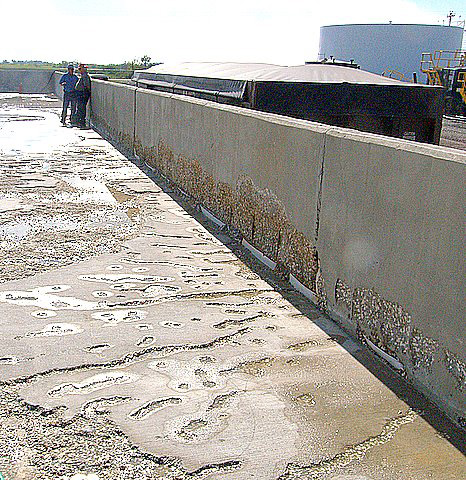It’s a too common occurrence to turn on the news and witness some form of hazardous chemical release into the waterways, ground, or atmosphere. These dangerous events have garnered a much greater public concern over the past 25 years, and social media and camera phones help to keep them in the forefront.
We used to only hear about the larger
incidents that resulted in the loss of life, an environmental impact on
drinking water, or large-scale disaster to wildlife, such as when the Exxon Valdez ran ashore on Prince
William Sound’s Bligh Reef in 1989. Now we are hearing and seeing more such
events — even those of a smaller-scale.
New regulations and legislation have increased
the liability on the chemical users and transporters, especially now that they
must take every precaution to minimize and prevent the accidental release of
hazardous substances into the environment. The protection of life and the
environment must be a primary concern for every facility owner, plant engineer,
operator, and maintenance personnel.
There are human error, accidents, and
leaking connections, gaskets, and seal failures, but with proper design and
aggressive planning for such incidents, these toxic releases can be minimized.
Secondary Containment
Systems
The proper design, construction, and maintenance
of the secondary containment system within an industrial facility is paramount
to containing leaks and spills from the primary storage tanks or vessels. The
main purpose of a secondary system is to contain the spill until it can be
neutralized, cleaned up, and disposed of properly. A secondary containment
structure must be designed with a high degree of chemical resistance to a
lesser degree than that of the primary system.
Especially in older facilities, many of
these containment structures were built from formed concrete due to cost of
material and ease of application. Concrete alone is not a suitable material in
providing effective chemical resistance or a reliable barrier for the
permeation of most acids and chemical concentrations. The permeation into the concrete will cause
severe degradation and cracking, allowing the acid or caustic substance to
leach out and contaminate the environment.
Protecting the concrete with a chemical
resistant coating or lining, therefore, can be an economical way to protect
these structures. Before a lining or coating can be applied, the concrete must
be evaluated to determine its condition. The contractor will also need to know
what surface prep, crack filling, chemical resistance, and other obstacles need
to be addressed to ensure a proper bond and a reliable finished product.
Chances are that if the secondary pit has been in place for some time, stress
and settling cracks will have formed and will need to be repaired with a
compatible mortar before a lining or coating can be applied.
 Today, engineers and specifiers have a
broader range of materials to choose from depending on several factors,
including whether the primary storage is an acid, solvent, or caustic, what the
concentrations are, and at what temperatures they are stored. Protective
coatings and linings can range from thin-film coatings to higher-build fiber. Flake-filled
lining systems and thick-matte reinforced systems are also options. Typically
all these systems will have an epoxy, vinyl-ester, epoxy vinyl-ester, novolac,
furan, or polymer concrete chemistry.
Today, engineers and specifiers have a
broader range of materials to choose from depending on several factors,
including whether the primary storage is an acid, solvent, or caustic, what the
concentrations are, and at what temperatures they are stored. Protective
coatings and linings can range from thin-film coatings to higher-build fiber. Flake-filled
lining systems and thick-matte reinforced systems are also options. Typically
all these systems will have an epoxy, vinyl-ester, epoxy vinyl-ester, novolac,
furan, or polymer concrete chemistry.
Application methodology may be done by
hand, such as brush, roller, trowel, or squeegee, but spray applications by
conventional airless spray and plural-component spray systems are quicker and
may be more cost effective. Reinforced matte systems do offer a higher degree
of chemical resistance, but they are time consuming applications that are
typically much more expensive. Again, keep in mind that the corrosion
protection required in secondary containment does not have to equal the level
of protection in the primary system. You may have a matte system in the primary
vessel but an 80-mil (2,032.0 microns) lining in the secondary pit. The degree of
protection should be enough that, in the event of a small spill, the surface
will be protected until a proper cleanup can be done. However, if a spill does cause penetration of the coating, repairs
can be completed to restore the integrity of the coating at a cheaper cost than
removing and replacing damaged concrete.
For extreme chemical resistance, there are
even heavier-duty linings, such as furan resin mortar/grout and brick and
polymer concretes. The carbon-filler furan is a bonding material for
acid-resistant brick or quarry tile, and it is a suitable complete system to
protect concrete and steel substrates from attack by corrosive chemicals and
physical abuse.
Polymer concretes are aggregate-filled
systems with sodium silicate, epoxy, vinyl-ester, or epoxy novolac resins that
are mixed and cast like standard portland cements. They are made to form a
monolithic topcoat over standard cement or as a cast-in-place chemical
resistant pump tank pad or secondary containment structure.
Don’t Be Lax
Thanks
to advances in material technology and application methodology, the rate of
application is now accelerated while lowering overall costs. Any industrial
facility that stores larger quantities of acids and caustics that are protected
by secondary containment will need a corrosion-resistant material for the
protection of their asset.
Don’t let your laxity in protection result
in a new spill or incidents.
About the Author
John E. Davis is an inside sales and marketing specialist at Sauereisen Inc., based in Pittsburgh, Pa. For more information, contact: Sauereisen Inc., www.sauereisen.com